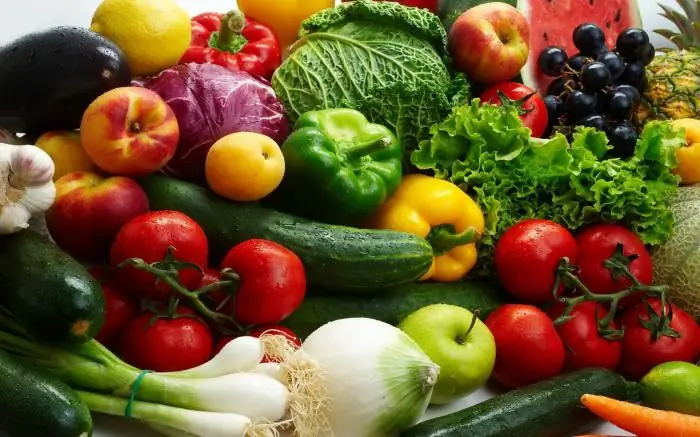2025 Author: Isabella Gilson | [email protected]. Last modified: 2025-01-23 12:50:38
Parmigiano-Reggiano is a hard granulated cheese. The name "parmesan" is often used to refer to various imitations of this cheese, although it is prohibited in the European Economic Area by law.

The product was named after the areas of its production - the Italian provinces of Parma and Reggio Emilia. In addition, this cheese is produced in Bologna, Modena and Mantua. According to Italian law, only a product that is produced in these provinces can be labeled as Parmesan. Outside the EU, this name can legally be used for cheeses with similar properties, while the full Italian name Parmigiano-Reggiano can be used for the original cheese.
History
According to legend, parmesan was created in the Middle Ages in the province of Reggio Emilia. Its production soon spread to the areas of Parma and Modena. Historical documents show that in the 13th and 14th centuries, Parmigiano-Reggiano was already very similar to that produced today. This indicates that its origin can be traced back much earlier.
This cheese was highly valued back in 1348 in the writings of Boccaccio - in the "Decameron" hementions a mountain of grated Parmesan, which is used to make ravioli and pasta. During the Great Fire of London in 1666, attempts to save supplies of parmegiano cheese and wine are described.

How is it made?
Parmesan (Parmigiano-Reggiano original) is made from unpasteurized cow's milk. Whole milk from the morning's milking is mixed with the natural skimmed milk of the previous evening (which is produced by storage in large, shallow cream separating tanks), resulting in a partially skimmed mixture. It is poured into large copper vats with thick walls. Whey is added to it (which contains a set of some lactic acid thermophilic bacteria) and the temperature of the mixture is raised to 33-35 °C.
After that, veal rennet is used, after which the whole mass solidifies for 10-12 minutes. It is then mechanically broken into small pieces (approximately the size of rice grains) and the temperature raised to 55°C under careful control. The resulting curd settles for 45-60 minutes. Then it is assembled into a dense material, divided into two parts and placed in molds. According to accepted standards, 45 kg of cheese should be obtained from 1,100 liters of formula milk.

The leftover whey is traditionally used to feed pigs, which are then used to produce Parma prosciutto (Parma ham).
Holding
Young Parmigiano-Reggiano cheese is placed in round stainless steel molds,which is tightly tightened by means of a spring mechanism. This allows the finished product to retain the shape of the wheel. After a day or two, the mechanism is loosened, with the help of a plastic imprint a label is made on the cheese with the name, plant number, month and year of production, and then the form is fastened again. After about a day, the form is placed in a container with brine for 20-25 days. The cheese then matures for 12 months. Each circle is placed on wooden shelves, which are manually or mechanically cleaned every seven days.

After 12 months, experts check each circle. The cheese is tested by tapping for unwanted cracks and voids. Circles that pass the test receive a special mark. A product that does not meet the standard is marked as not tested, but is also allowed to be sold. In the future, Parmigiano-Reggiano is kept for about a year.
Taste Description
The only additive allowed is s alt, which the cheese absorbs when immersed in brine for 20 days. Since Parmigiano-Reggiano is produced daily in large batches, the taste may vary. The high quality product has a tangy compound fruity-nutty flavor with a strong savory aroma and a slightly rough texture. Irregularities in cooking technology can give it a bitter taste.
A medium parmesan circle (head) is about 18-24cm in height and 40-45cm in diameter, and weighs 3.8kg.

Use
Parmesan cheese, which in Russia starts at 500 rubles per kilogram (local types), is usually used grated in pasta dishes, soups and risottos, and also eaten on its own. It can also be added to many salads and, of course, pizza. As follows from consumer reviews, its taste is so rich that it allows you to completely change almost any dish. That is why it is not recommended to abuse it if you use it as an ingredient in something compound.
The hard parts of the crust are sometimes melted over low heat in the broth. They can also be fried and eaten as a snack. This use is not very common in Russia and post-Soviet countries, but if someone managed to try it, the reviews are usually positive.
What substances does this product contain?
Parmigiano has many aromatic active compounds, including various aldehydes and butyrates. Its butyric and isovaleric acids are sometimes used to mimic dominant cheesy flavors in other foods. True cheese lovers will not confuse its noticeable aroma with anything.
Parmigiano-Reggiano also has a particularly high content of monosodium glutamate - as much as 1.2 grams per 100 grams of cheese. The higher figure contains only Roquefort. The high concentration of glutamate explains the strong rich taste of Parmigiano-Reggiano. The same circumstance explains the popular opinion that this cheese is highly addictive.
Parmesan also containsa fairly high amount of fat - 25.83 grams per 100 grams of weight. The product is also rich in B vitamins, as well as a very large amount of calcium. Such characteristics have the original Italian Parmesan cheese, the price of which is about 400 rubles per 100 grams of the product. Cheaper analogues of European and Russian production may have slightly different properties, but the differences should not be too strong. As a rule, the main difference is manifested in the taste of the product.
Recommended:
Italian cheese. Names and characteristics of Italian cheeses

Such a food product as cheese can be called without exaggeration one of the most important and favorite foods of man. Almost every refrigerator has a piece. It is added to salads, appetizers and main courses, desserts are prepared with it … There are a lot of options for using this product. Italian cheese in all its variety seems not as popular as its French relative, but in practice it turns out that it is used even more often
Italian breakfast for adults and children. Traditional Italian breakfast

You probably know everything about the English morning meal. Do you know what an Italian breakfast is? For those who like to start the morning with a hearty meal, it can be disappointing, and fans of sweets and coffee can be inspired. In a word, it can frighten or amaze (the tradition of breakfast in Italy is very far from ours), but it will not leave anyone indifferent
What is the use of cottage cheese? Chemical composition and nutritional value of cottage cheese

Properly selected or cooked cottage cheese will bring much more benefits to the body than the product that is hastily selected or made incorrectly. It turns out that this also requires knowledge, because knowledge is power
Italian wine: names and reviews. The best Italian wines

Italian wines, whose names often coincide with the grape variety, are of two types: red Rosso (Rosso) and white Bianco (Bianco). You can choose a drink that is ideal for any situation. Also, these wines go well with all the cuisines of the world
Italian soup: recipes. Italian soup with small pasta

Soups are an integral part of our diet. Someone is indifferent to them, others do not like, and still others cannot imagine dinner without them. But it's impossible not to love Italian soups. Their recipes are innumerable, each family cooks in its own way, each village observes centuries-old traditions and considers only its version to be primordially true and correct. Let's get acquainted with the masterpieces of Italian gastronomy, which are often simple in ingredients and preparation

